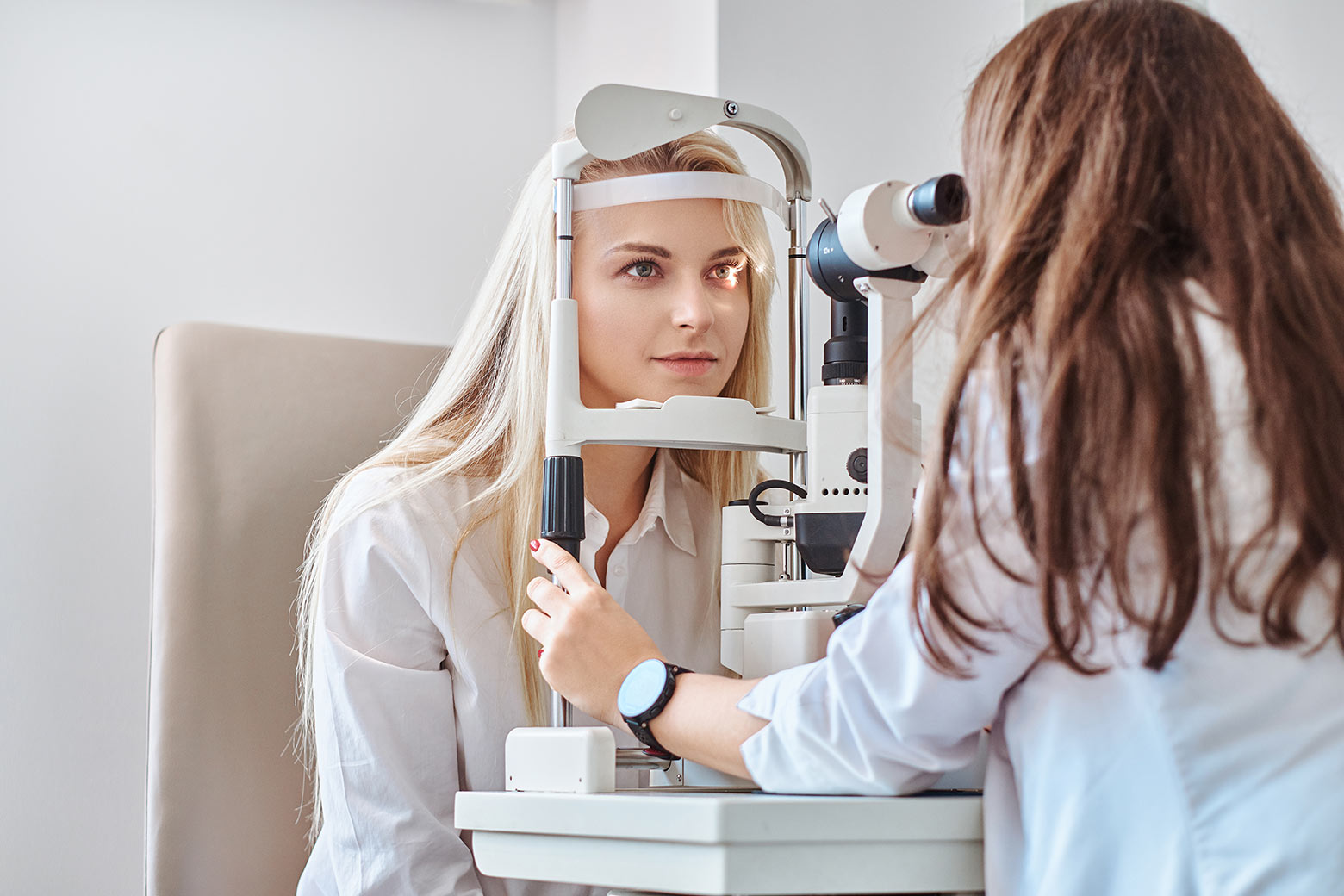WHY DO MY EYES FEEL DRY?
THE MANY CAUSES OF DRY EYE EXPLAINED
Your eyes should always be producing healthy tears
When healthy, your tears are a balanced combination of oil, water and mucous that work to lubricate the surface between your eyelid and the actual surface of the eye. The Lipid Layer (oily portion of the tears) minimizes the moisture evaporation on the surface of the eye and is slippery. The Aqueous Layer (watery component of the tears), cleanses the eye surface and brings oxygen to the cornea. Finally, the Mucin Layer (mucous) helps the tears spread evenly over the front surface of the eye. If any of these three layers are diminished in quality or quantity, the surface of your eye will begin to quickly become compromised. Once the damage to the ocular surface begins to progress, you will eventually experience the various symptoms of dry eye.
TEARS ARE PRODUCED BY GLANDS IN AND AROUND THE EYELIDS
The Lacrimal gland (located just below the outer portion of your eyebrow) produces the aqueous or watery portion of the tears. Systemic inflammation in the body and/or autoimmune diseases can cause this gland to not produce enough water. This is called Aqueous Deficient Dry Eye.
The Meibomian glands, on the other hand, line the upper and lower eyelids and produce the “meibum” which is the oily part of the tears. When these glands get inflamed or clogged, the oil cannot come out and the tears will no longer be held effectively on the eye. This is called Evaporative Dry Eye. Ironically, if there is not enough oil to keep the tears on the eyes, the eyes may seem much more watery, or tear a lot. This happens because the aqueous component of the tears can no longer be held in place.
Common Causes of Dry Eye.
- Staring at a computer or digital device for long periods of time.
- Infrequent and/or incomplete blinking
- Autoimmune diseases – Rheumatoid Arthritis, Lupus, Rosacea, Crohn’s, Sjogren’s, etc.
- Eyelid infections/inflammation – Blepharitis, Ocular Rosacea, Demodex, etc.
- Meibomian Gland Dysfunction (MGD)
- Thyroid Disease
- Prescription Medications – oral contraceptives, antidepressants, acne medication, etc.
- Over the counter drugs, allergy medications, antihistamines and decongestants.
- Environmental conditions – dry, arid, smoky or dusty air. Airborne irritants. Allergens. Etc.
- Make up toxicity and / or poor eyelid hygiene.
- Systemic inflammation caused by stress, diet, environment, health issues and/or medications.
- Anything that can irritate the eye or create inflammation in the body can cause dry, red, irritated eyes.
suffering from dry eye is not something you need to get used to
Here in Wisconsin, we’re not prone to ultra-dry, smoke-filled or dust-filled air as it happens in the desert southwest. But, that doesn’t mean that winter isn’t really dry, or summer isn’t very dusty.
Age is another big factor when it comes to dry eye. The older we get, the more structural or functional problems we may encounter with the glands in our eyes. While there’s nlthing anyone can do about getting older, the suffering from dry eye is no longer something that anyone needs to accept as part of the natural aging process. We hear it from our patients daily – the drops seem to be helping…at least a little. But we hear the frustration too. T?he drops alone are not doing anything to actually solve the underlying problem. T?he good news is we now have the knowledge and technology to address the underlying problems. We can slow, and in some cases reverse the damage that is causing dry eye.
Composition and sources of tear film

Schedule your DryEye exam today.

